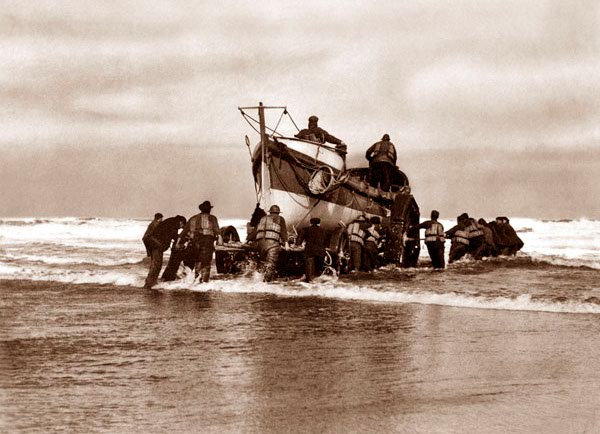In 1914 the Whitby lifeboatmen, along with four other boats from the treacherous north east coast of England, saved 85 lives, including wounded soldiers and nurses aboard the hospital ship ‘Rohilla’. We bring a report from the RNLI along with another iconic photo from the Frank Meadow Sutcliffe Collection, showing the Whitby lifeboat c.1890 and video footage of the rescue from the Pathé News archive.

Watch the story of the ‘Rohilla’ rescue as reported on Pathé News
A Gold Medal was awarded to Coxswain Thomas Langlands and Silver Medals to Second Coxswain Richard Eglon and George Peart for service during the rescue of people aboard the hospital ship ‘Rohilla’. She was on her way to Dunkirk to evacuate the wounded with 224 men and five nurses on board as she ran onto a dangerous reef at Saltwick Nab. Almost immediately she broke in half in a terrific east-south-easterly gale at 0400 on 30 October, 1914. Lifeboats from Scarborough, Teesmouth, Tynemouth, Upgange and Whitby nos.1 and 2 were involved in this rescue. When the rescue finished, 85 lives had been saved by lifeboats and 83 people were lost. Whitby number two lifeboat with her coxswain and second coxswain showed undaunted enterprise and determination in the face of what to lesser men, would have been insurmountable difficulties. Other survivors made their own way ashore assisted by a number of onlookers, prominent amongst them was Mr Peart, who rushed into the surf at great personal risk to drag them out. This was the most outstanding service of the war and one of the greatest in the whole history of the lifeboat service.
History of Whitby Lifeboat Station, RNLI
Created at the beginning of the 20th Century by the Pathé brothers, the newsreel was the world’s first televised news platform. Pioneering the technology and methods of cinema, British Pathé stayed at the forefront of filmed news for decades. Releasing three newsreels a week during that period, British Pathé was the way the people of Britain experienced world events until the advent of television.

You must be logged in to post a comment.